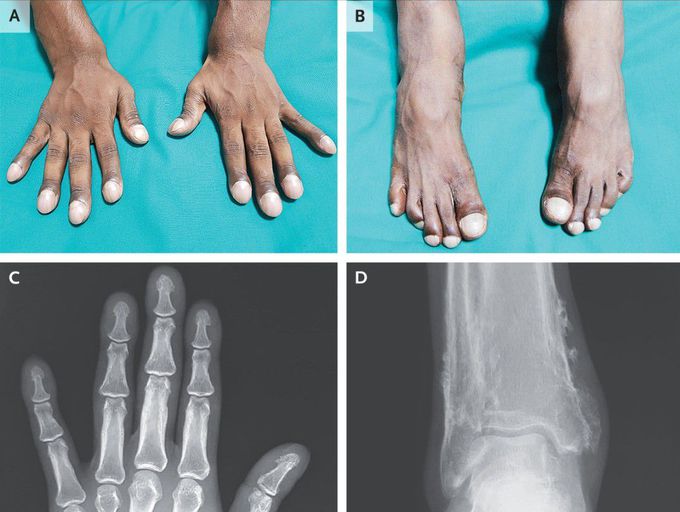


Primary Hypertrophic Osteoarthropathy
A 31-year-old man presented to the internal medicine clinic with 10 years of progressive enlargement of his fingertips and toes and intermittent aches in his distal forearms and lower legs. He had no clinically significant medical history or family history of similar symptoms. Finger and toe clubbing, with a supranormal angle of 210 degrees between the nail bed and the proximal nail fold, was observed on examination. Hyperpigmentation of the proximal nail folds; tenderness to palpation of the distal forearms and lower legs, fingertips, and toes; and widening of the distal forearms and lower legs (Panels A and B, respectively) were also observed. There was no skin thickening or hyperhidrosis. Radiographs of the fingers showed bony proliferation at the tips of the phalanges (Panel C), and radiographs of the ankles showed increased periosteal bone formation at the distal tibia and fibula (Panel D). Serum laboratory tests (including thyroid-function studies), an echocardiogram, and whole-body positron-emission tomography–computed tomography were normal. The patient received a diagnosis of primary hypertrophic osteoarthropathy, a hereditary syndrome characterized by clubbing, periosteal bone proliferation, and (not seen in this case) facial skin thickening and hyperhidrosis, in the absence of systemic conditions. The patient was initially treated with nonsteroidal antiinflammatory drugs for 3 months. Given persistent symptoms, zoledronic acid was administered, and his pain had abated at follow-up 2 months later.

